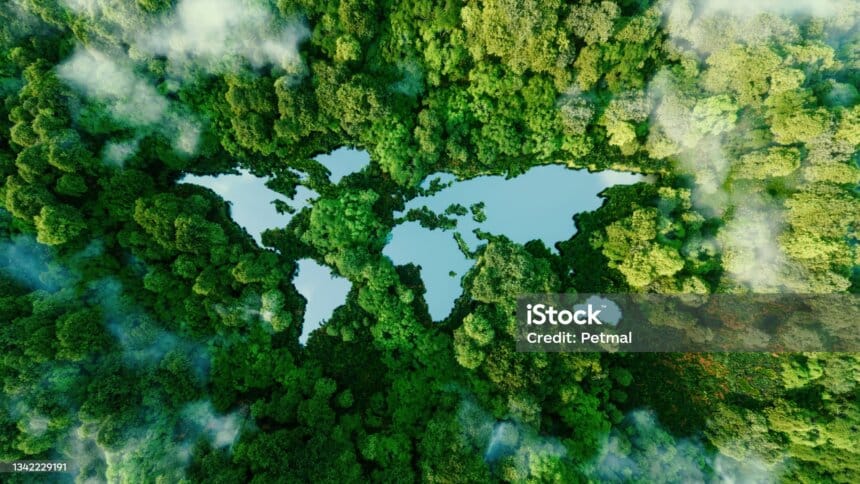The air, water, soil, plants, and animals surrounding us are all part of the environment. Sustainability is the prudent use of these natural resources for the benefit of future generations. When these concepts are combined, environmental sustainability refers to achieving our present requirements without endangering the world for future generations.
Why Is Environmental Sustainability Important?
Maintaining the ecosystem guarantees healthy soil for food production, clean air to breathe, and safe drinking water. Additionally, it supports the equilibrium of ecosystems, which are the foundation of all life on Earth. If we don’t practice sustainability, we risk running out of resources and damaging our world irreparably.
Important Environmental Issues
- Temperature Change: Human actions such as burning fossil fuels are mostly to blame for the Earth’s temperature warming at a never-before-seen rate. As a result, ecosystems are disturbed, harsh weather occurs, and sea levels rise.
- Pollution: Pollution of the air, water, and soil affects both wildlife and human health. Plastics, chemicals, and industrial waste are examples of common contaminants.
- Deforestation: Clearing forests for agriculture, urbanization, and lumber harvesting lowers biodiversity and fuels climate change.
- Loss of Biodiversity: The stability of ecosystems on which people depend is in jeopardy due to the growing rates of species extinction.
- Depletion of Resources: When natural resources such as water, minerals, and fossil fuels are overused, shortages and environmental damage result.
Goals for Sustainable Development
The United Nations has established 17 objectives to safeguard the environment and advance development. These include combating climate change immediately, guaranteeing clean water and sanitation, and eradicating poverty.
Steps Towards Environmental Sustainability
- Renewable Energy: Greenhouse gas emissions are decreased by using hydro, solar, and wind power.
- Energy Efficiency: Resource conservation is achieved by enhancing energy consumption in residences, businesses, and transportation.
- Sustainable Agriculture: Techniques like organic farming and crop rotation preserve soil health and lower pollution.
- Waste Reduction: Recycling and composting save materials and reduce the amount of waste that ends up in landfills.
- Conservation Efforts: Biodiversity is maintained by safeguarding endangered species and natural ecosystems.
Relationship Bwtween Environment and Sustainability
- Environmental Protection: In order to guarantee that natural resources will be accessible to future generations, sustainability entails conserving the environment. This involves initiatives to manage resources like water, soil, and air without depleting them, lessen pollution, and preserve natural ecosystems.
- Resource Management: The goal of sustainable practices is the responsible and efficient use of resources. This entails striking a balance between resource regeneration and consumption. Sustainable forestry methods, for instance, make sure that the amount of trees harvested does not outweigh the forest’s capacity to recover.
- Climate Change Mitigation: One of the most important components of sustainability is addressing climate change. In order to preserve the ecosystem and guarantee a stable climate for coming generations, greenhouse gas emissions can be decreased by using renewable energy, energy efficiency, and sustainable transportation.
- Conservation of Biodiversity: Sustainability highlights how crucial it is to protect biodiversity. In addition to offering vital functions like pollination, water purification, and soil fertility, a robust and diversified ecosystem is more resistant to changes in the environment.
- Social and Economic Aspects: Sustainable development takes into account social and economic aspects in addition to environmental ones. It seeks to preserve the environment while establishing fair opportunity for everyone. This entails encouraging ethical work practices, bolstering regional economies, and guaranteeing access to healthcare and education.
- Long-Term View: Sustainability involves long-term planning. It focuses on developing procedures and systems that are sustainable and long-lasting without harming the environment or depleting resources.
Social Behavior
Reduce, Reuse, Recycle: Reduce waste by recycling materials and selecting reusable items.
- Conserve Water: To cut down on water usage, repair leaks and install water-saving fixtures.
- Encourage Sustainable Products: Pick eco-friendly businesses and goods manufactured from sustainable resources.
- Use Public Transportation: By using the bus, rail, or carpooling, you may lower your carbon emissions.
In Summary
To the sake of our planet’s and future generations’ health, environmental sustainability is essential. We may strive toward a more sustainable world by being aware of the issues and acting proactively on both a group and individual level.
Also, Check Renewable Resources: The Future of Energy
Example of Environmental Sustainability









